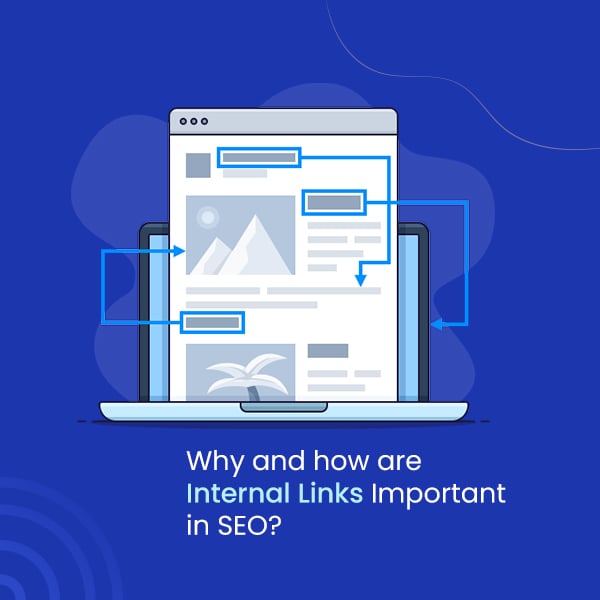
Internal links:
The links found on the page which get connected to the other pages of the same website are called internal links. Users and search engines both use links to find the content of your website. Your clients use the links for navigation through the site, for finding the site, and for finding the content that they need to find. Also, search engines use the links for navigating your site. We can’t see the page if the link is not given.
There are various types of internal links. In addition to links to the homepage, menu, post feed, etc., links can be added to your content also. This is also called contextual linking. The contextual links provide your users with interesting and related content. Finally, they allow the search engines to find out what content on your site is related and also determine its value. If the significant page receives more links, then it will seem more important to the search engines. Hence, having good internal links is always very important to your SEO.
Internal links vs external links :
Both internal and external links are present on every website and also in online stores. Mostly, internal links connect the pages and posts on your website, whereas external links will connect the pages to other websites. While coming to the post, we will mainly see the internal links and what they mean for SEO. See our post on link building for getting more external links pointing at your site.
Why are links crucial to Google?
Internal links are a very important factor for Google and other search engines. But why are internal links important and where do these internal links have to get started?
Google mainly uses internal links for discovering the content on a website and also for ranking this content in the search results. If your post or your page gets many links, then this will signal to Google that it is essential or a high-value article. This is applicable to both internal and external links.
Internal links are controlled by the website owner. Internal links that are correct will direct visitors and Google to the most important pages. The internal linking tool will help or suggest related posts to link to.
Content Relationship :
Websites are crawled by Google using internal and external links, using a bot which is called the Googlebot. This bot arrives at the website’s homepage, renders the homepage, and follows the first link. By following these links, Google can work with the relationship between the various pages, posts, and other content. In this way, Google finds out which page of your site covers a similar subject matter.
e.g., You will be able to see the links to the ‘content SEO’, and ‘internal link building’, and the site structure tags will be found at the top of the post. We might be sure that Google should understand the content on those pages, which is related to the content of the post on the addition of these links.
Link Value :
For a better understanding of the relationship between the content, Google mainly divides the link value between all the links on a web page. The homepage of the website often has the most significant link value because it has the most backlinks. This link value is typically shared among all of the links found on that homepage. The link value is passed to the following page, which will also divide the links on that page, and so on.
So, if you link to the new blog from the homepage, it will receive more link value than if you link to it from the category page. Recent pages will get found by Google, which will be quicker if they’re linked to from the homepage.
While getting the concept that the link gets passes their link value on, you’ll also understand that more significant links to the post will mean more value. Because Google deems a page that gets lots of valuable links as the most crucial, so you’ll increase the chance of that page ranking.
Setup of an internal linking strategy
- The page relevance;
- The page’s relationship;
- The page’s value;
- The ideal structure should have to be get determined of your website.
- You should have to decide which one is most important content.
- Contextual links have to be added.
- Link hierarchical pages.
- Related post selection should be considered adding.
- Try adding navigational links.
- Add links to your taxonomies.
- Popular recent post should be considered while adding.
Go ahead and link your content:
Your content will not get ranked without the links. With a solid internal linking strategy, you can show which content is related and which articles are the most informative and valuable. Both your users and Google will understand your site better if you follow the guidelines in the post, which in turn increases the chances of rankings.